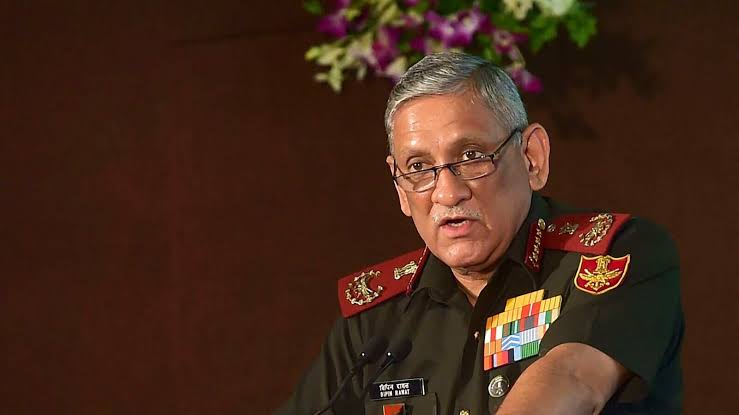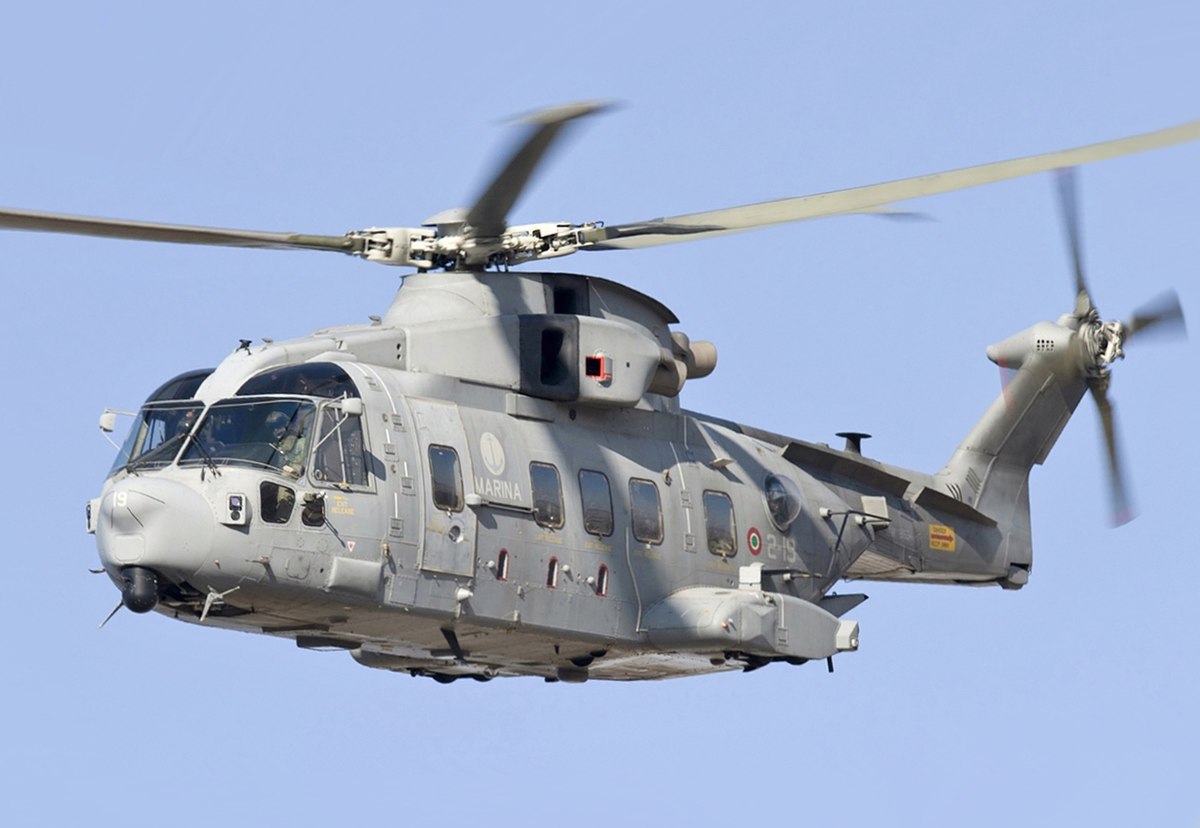India’s Chief of Defence Staff, his wife, and 11 others died in a helicopter (Mi-17 V5) crash in southern India’s Tamil Nadu state on December 8. The Mi-17 V-5 is a military transport variant of the Mi-8/17 helicopter family.
“With deep regret, it has now been ascertained that Gen Bipin Rawat, Mrs Madhulika Rawat and 11 other persons on board have died in the unfortunate accident,” the Indian Air Force tweeted.
Gp Capt Varun Singh SC, Directing Staff at DSSC with injuries is currently under treatment at Military Hospital, Wellington.
— Indian Air Force (@IAF_MCC) December 8, 2021
An IAF Mi-17 V5 helicopter with a crew of 4 members carrying the CDS and 9 other passengers met with a tragic accident near Coonoor, Tamil Nadu. The sole survivor is Group Captain Varun Singh. He is being treated for his injuries at the Military Hospital in Wellington.

General Rawat was heading from the Sulur IAF Station to the Defense Services Staff College in Wellington. The chopper crashed in a forest area reportedly due to poor visibility following heavy fog.
Defense Minister Rajnath Singh tweeted that he was deeply anguished by the sudden demise of CDS Rawat and the 12 others. “His untimely death is an irreparable loss to our Armed Forces and the country,” he said.
The Indian Air Force has already ordered an inquiry into the crash. General Rawat was the country’s first Chief of Defense Staff, a position instituted in 2019 to better cooperation across the Army, Navy, and Air Force.

Mi-17 V-5 Helicopter
The Mi-17 V-5 is a military transport variant of the Mi-8/17 helicopter family that is utilized for personnel deployment, arms transport, fire support, patrol, and search and rescue missions. It is regarded as one of the world’s most advanced military transport helicopters.
The helicopter is equipped with advanced avionics and can operate in any geographical and climatic setting, day or night, and in limited adverse weather conditions. The chopper is used by the Indian Air Force to transport cargo, deploy troops in operational zones, and conduct rescue and relief missions around the country. These helicopters are also operated from the Sulur airbase.
The Soviet-designed Mi-17V5 helicopter is capable of landing on unprepared sites at night and has a maximum load capacity of 13,000 kilograms and can travel at a top speed of 250 kilometers per hour.
In 2008, Russia’s Rosoboronexport inked a deal to deliver 80 Mi-17V5 helicopters to India. The last batch of the Mi-17V5 chopper was delivered to India in 2018. These helicopters, according to experts quoted by NDTV, are extremely reliable and serve as workhorses of the Air Force.
It can be converted into an attack helicopter by being weaponized to destroy ground targets. It has unguided rockets, cannons, and small guns as part of its armament system. The helicopter has a self-defense system against heat-seeking missiles, a strongly armored cockpit, essential systems and components, and enhanced survivability.
It can be equipped with Shturm-V missiles, S-8 rockets, a 23mm machine gun, PKT machine guns, and AKM sub-machine guns. However, this is not the first time an IAF Mi-17 helicopter crashed.
#WATCH video of the Indian Air Force Mi-17 helicopter that crash-landed near a helipad in Eastern Arunachal Pradesh today with two pilots and three crew members. All of them are safe with minor injuries.
(Source: a local person) pic.twitter.com/cTUbzZRT3J
— ANI (@ANI) November 18, 2021
On November 18, 2021, an IAF Mi-17 helicopter crash-landed in eastern Arunachal Pradesh with two pilots and three crew members on board. However, no casualty was reported.
In 2017, an IAF Mi-17 chopper crashed near Tawang in Arunachal Pradesh, killing seven people. During the tussle with Pakistan over the Balakot strike in February 2019, an IAF Mi-17 was shot down by its own SPYDER air defense system.
Mi-17 V5: A VVIP Chopper
The Russian-made Mi-17 V5 is a reliable transport helicopter used by all dignitaries, including the President of India, Vice-President, and Prime Minister. The IAF opted to convert the Mi-17V5 for use as a VVIP transport helicopter in 2014.
The decision was taken after the government blacklisted AgustaWestland over bribery suspicions relating to the then-new fleet of AW-101 helicopters.

As mentioned earlier, the Mi-17V-5 (domestic designation Mi-8MTV-5) is a military transport variant of the Mi-8/17 helicopter family. The Mi-8MTV is a member of the Mi-8M series, which is often referred to as the Mi-17 in export variants.
The Mi-8 helicopters are also used by the Russian President. The scale of the Presidential Mi-8 fleet is unknown, however, at least two aircraft in the gray, red, and blue color scheme are known to exist. A similar version in glossy green camouflage, which could be an Army executive transport, has also been reported.
This series of choppers was bought even by Russia’s rival, the US, for the erstwhile Afghan Air Force. More than 60 countries use the Russian-made Mi-series helicopters.
Not Learning From Errors?
According to a report in The Hindu, an eyewitness who saw the helicopter crash and a police officer who reached the site said the weather was clear and there were no clouds.
The eyewitness said: – I saw that the helicopter was flying at a very low altitude. Suddenly it turned and collided with a jackfruit tree. After that, there was a loud explosion. The weather was clear when the helicopter crashed.
Questions are being raised that why was the helicopter flying at such a low altitude? Did the pilot have any weather alerts from Air Traffic Control or Army Control? Tamil Nadu Police officials have told the newspaper that the entire matter is being investigated.
The newspaper had written in its report that the helicopter crash of the then Chief Minister of Andhra Pradesh YS Rajasekhara Reddy took place in the mountainous area of Kurnool. The weather was bad then, yet the pilot was pressured to fly. The newspaper has written that no lessons have been learned from the accidents of the past.
The poor judgment displayed by pilots was a key cause identified by the four-member committee. They encountered a snag in the transmission of oil pressure. They (pilots) got so engaged in the emergency checklist to fix the issue for a vital six minutes that they “lost situational awareness of the extreme bad weather ahead.”
However, a report said, “The Committee in the present case could not find any evidence/indication wherein (the) VIP interfered/influenced the flight planning/progression”.
The report concluded – The chopper was not airworthy when it was approved for flight on even though this was not a contributory factor to the accident.” Yet, the certificate of Airworthiness was very much valid.
A.P. Aviation did not maintain any snag register to allow the analysis of the deficiencies. Besides, when the two engines were switched earlier, the grounds for their removal were not registered in the logbook demonstrating “the casual attitude of the maintenance personnel.”
- Penned By Ashish Dangwal & EurAsian Times Editorial Desk
- Contact the desk at edesk@eurasiantimes.com
- Follow EurAsian Times on Google News




